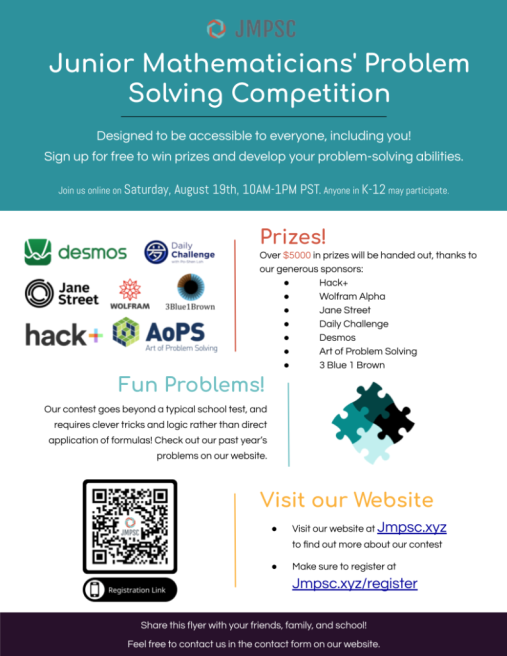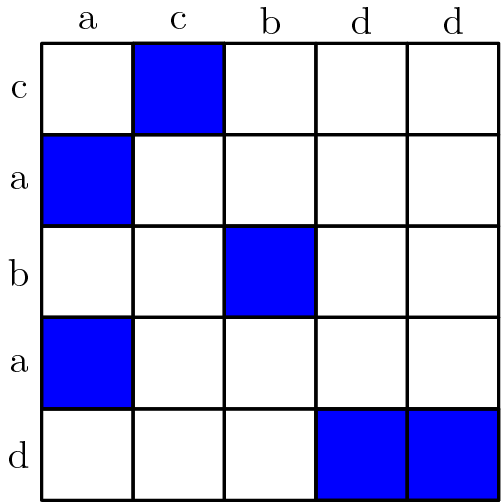Hello, Codeforces!!
I've seen some discussion on using math to improve CP skills, so I'd like to invite you all to JMPSC 2023!
JMPSC is a mathematics contest for pre-collegiate students (defined as being <= 12th grade in the 2023-2024 school year). We have two separate divisions, with Division 2 appealing to beginners in the math contest scene, or those looking to gain more experience in math, and Division 1 appealing to math contest veterans. Do sign up if you're interested in advancing your mathematical skills or would like to try out some cool problems (registration is free!)
Good luck and have fun!
Info: JMPSC Season 3! [Over $5000 in prizes]
Taking place on August 19th, 2023 at 10am-1pm PST (1pm-4pm EST) online
Sign Up (direct link): https://forms.gle/Xe2uML2PpE3tqGC69
AoPS Post: https://artofproblemsolving.com/community/c5h3119520_cash_prizes_jmpsc_year_3
Learn More at https://jmpsc.xyz/











